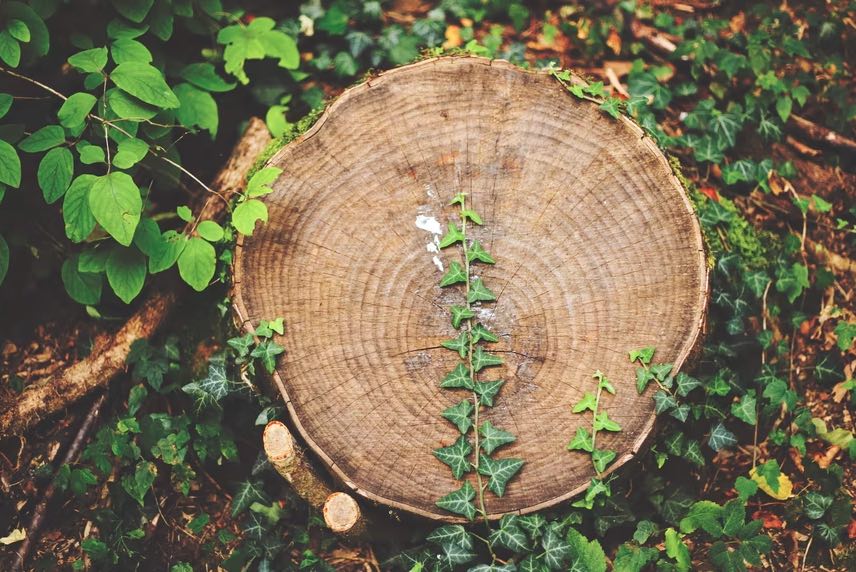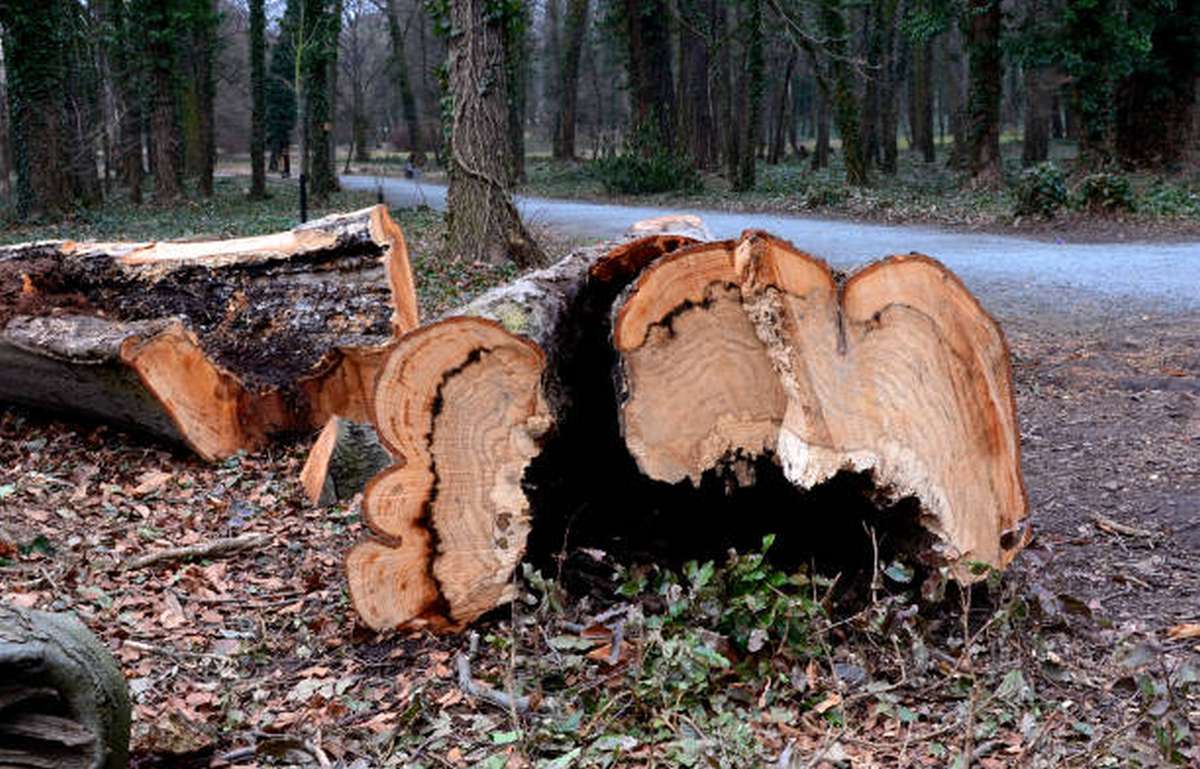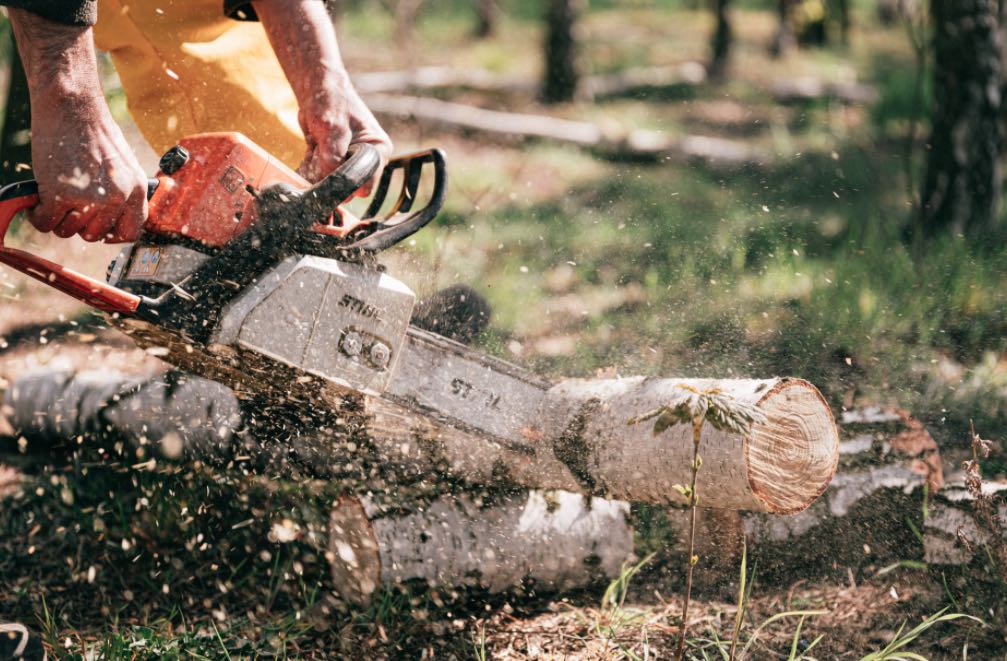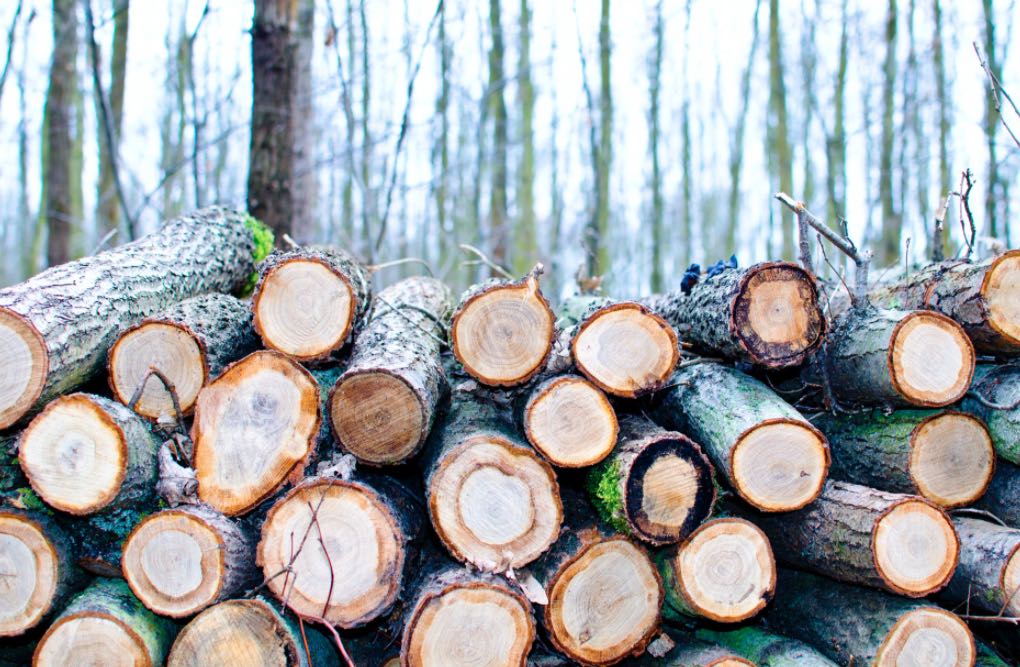Tree removal is a major undertaking that requires careful thought and planning. What will happen to the tree stump once the tree has been cut down? is one such issue. You can either leave it or get rid of it.
The simplest solution would be to leave a stump; however, this is not necessarily the greatest choice. Tree stumps may make an otherwise neat lawn look untidy. They can be a nuisance to walk around, a nuisance to mow around, and a host for pests and rot that can spread to other plants in your yard. What's left of the stump, in the form of roots, may wreak havoc on things like water and sewage lines, concrete, and asphalt.
There's a stump on your lawn. You may have decided to cut down the tree because it was too close to your driveway or because it was sick and posed a threat to your family's health and well-being. If the tree fell or was cut down, all that's left is the stump and the roots. You, like many other people, would like to see this eyesore removed. Consequently, what should we do? We get that you might want this stump "removed" (to put it mildly). However, "removal" of the stump refers to a totally distinct action than "grinding" of the stump. Actually, stump grinding is usually the best choice.
After a tree has been felled or chopped down, its stump may stay in place for some time. In some cases, this can help a tree revive from its base. But stumps are just eyesores that can't be avoided. Because of this potential problem, many homeowners opt to have their stumps removed.
So, you recently had a tree cut down, and now you're stuck with a stump. In order to avoid cutting down a tree unless absolutely necessary, we at Sesmas Tree Service explore all other possibilities first. The removal of trees continues to be a common practise among property owners for a number of reasons. But then there's the stump: what do you do with that? To get rid of an unsightly tree, most people simply know to grind up the stump. However, stump grinding is a viable alternate strategy. You can be excused for ignorance if you have never heard of stump grinding. Therefore, we have written this piece to discuss the two alternatives and give our take on them.
Reasons For Removing Or Leaving A Tree Stump In The Ground
Stumped as to whether to keep your stump or remove it permanently?
While an old tree stump may not seem like a big deal at first, Brian warns that it can become a major annoyance if left there for too long. "Stumps in the yard can be a nuisance to mow around and perhaps a safety risk for you and your loved ones. Not to mention they make it difficult to establish a new tree when the time comes."
The presence of creepy critters is not the only good reason to get rid of a tree stump. The fact that you are considering releasing your grip on the stump is a good sign.
- A rotting stump does not look appealing. A decrease in property value and a decrease in the yard's aesthetic appeal are both possible results.
- Since Brian warned us not to mow over the stump or its roots, we avoided that area of the lawn.
- The stump and its extensive roots prevent the planting of new trees in the immediate area.
What Is A Stump Removal?
As the process of stump removal requires more than merely eliminating the stump, the name may be deceptive. When you cut down a tree, you're left with the stump and the roots, which will eventually decay. If you want to get right down to business and get rid of them, be prepared for an intrusive procedure. First, the huge tree stump must be pulled up, and then the enormous roots must be dug out. The damage done to your property will be substantial and will necessitate the use of industrial strength machinery.
Since the limb was cut off at the base, the entire tree stump has been removed, along with the underlying bone. The need for this laborious approach, however, is frequent. A tree's root ball expands in tandem with the tree's growth, and this expansion might result in a somewhat sizable root mass.
Most stump specialists agree that this is a challenging assignment. Over the spot where the tree originally stood, there is a sizable chasm caused by the root ball. Stumps can be ground down to mulch for a more aesthetically pleasing appearance and to prevent the regrowth of unwanted trees.
Stump Removal Method
When a tree stump is removed, the entire trunk and root system are taken away. This approach presents a moderate difficulty level. Normally, a tree's root ball expands in tandem with the tree itself. It's easy to see that the root ball is getting considerably bigger to accommodate the new, larger roots. The root ball would typically reach four to ten times the height and width of a mature tree. For this reason, most professionals involved in stump removal find it challenging to get rid of the root ball.
Stump Removal:
Pros
- Gets rid of the tree and all its roots
- Prevents rot and insect infestations
- Gives you more room in your yard
- Prevents destruction of infrastructure such as water and sewage lines, basements, and pavement.
Cons
- It leaves a large hole in the yard
- Most intrusive
What Is Stump Grinding?
The term "stump grinding" is more descriptive of its intended purpose. Given that this strategy does not include digging up the roots, it is considerably more manageable. Instead, up to 18 inches of the stump's base are ground away. The hole it creates in your yard is noticeable, but it's not quite as big as the one left by removing a stump.
If you want an inexpensive way to get rid of that annoying stump, stump grinding is your best bet. In most cases, this is the method of choice when a tree must be cut down to the ground. It all starts with a grinder stump, which is used to remove the tree's root system. As a mulch or surface cover, these tiny stump pieces are ideal.
Once that's done, the stump is just a few inches below ground and can be covered with mulch or soil. Grass will ultimately cover it up. Most of the stump will eventually deteriorate.
Stump Grinding Method
When a tree is chopped down to the ground and then thrown away, the stump can be eliminated by grinding it down. To begin the stump grinding process, the stump must be cut into smaller pieces. These fragments work well as mulch or as a ground cover. After stump grinding, the area is covered with a thin layer of dirt and dust. After some time, the portion and its surrounding roots will perish.
Stump Grinding
Pros
- A simple method for cutting down the tree
- Most efficient and least invasive
- Produces mulch-ready wood chips as a byproduct
- Gives you more room in your yard
Cons
- The roots are left behind.
- There is still a risk of decay and pests spreading to other areas of the yard.
- Roots have a degradation time of 10 years or more.
What Difference Stump Removal From Stump Grinding?
The majority of homeowners who take pride in their lawns will not be interested in having stumps removed. That's because when you remove a stump, you're actually getting rid of the entire root system, not just the visible portion above ground. Because of this, you'll need a Bobcat or some other similarly robust machine. Moreover, your tree's roots could now be covering a considerable portion of the yard.
The result could be that you break up a large portion of the soil on your land. Full-scale stump removal is typically only attempted by homeowners when they are preparing a lot for construction and the aesthetic value of the stump is not a priority.
Instead of removing every last root from the ground, homeowners can choose the much simpler approach of stump grinding. Instead, we'll use a stump grinder, like the one seen below, to essentially shave the remaining tree trunk down to nothing. A stump is the part of a tree that has been cut off, usually because it has died. Yes, there will still be a hole in your yard once the stump is ground down, but it will be much less than if you had the stump removed.
The Benefits of Removal Vs Stump Grinding
- Deep Extraction Is Not Required For Stump Grinding: If you need a tree stump removed, your landscaper will have to utilise powerful machinery to break up the ground. The difference between grinding and removal is that the latter requires digging up the tree's roots, which may be rather deep. We can quickly and efficiently remove that unsightly stump from your property by using one of our modern stump grinders.
- Stump Grinding Is Both Safe And Effective: Stump removal is a more intrusive process that often necessitates the use of large machinery, which in turn increases the potential for injury to both the operator and the stump. When compared to other tree services, stump grinding is less hazardous and may be finished quickly, allowing you to minimise damage to your property and downtime to your schedule.
- Comprehensive Stump Grinding: Although some stumps can be ground down 18 inches, the norm in the industry is to continue grinding until no trace of the trunk remains. We'll tailor our approach to your specific stump and your property's requirements. Either method, you can get rid of the unsightly stump without damaging the surrounding area.
- Stump Grinding Removes Tree Roots: Because the roots are still there after stump grinding, it could seem like your tree can grow again from there. By grinding the stump completely down, however, we may effectively prevent undesired trees from growing again. Any residual tree roots will instead decompose naturally in your soil.
- Pests Are Not Attracted To Stump Grinding: Stumps are a magnet for termites and other pests, but Purple Care will grind them away, leaving your property protected. Our staff will clean up any sawdust that could serve as a food source for termites and get rid of any residual wood that the pests could use to construct a nest.
Although stump grinding removes the tree's visible remnants, the old tree's roots may still be present 4, 8, or even 12 feet below the earth. These roots will eventually decompose on their own once they have been ground up, but it will take a long time. For the roots to be completely decomposed, it may take ten years or more.
Can I Plant A New Tree Where My Old One Was?
The quick answer is "yes," but we strongly advise against it. Some homeowners may try to cover up the scar left by a fallen tree by planting another tree in the same spot. If the tree was injured or diseased, for example, and the homeowners were sad to see it go, we find that this is the case.
The remaining roots after stump grinding, however, will make it impossible for a new tree to develop. The old roots not only prevent the newer ones from taking hold because they are in the way, but their decomposition also alters the soil's acidity. There may be difficulties in the new tree's development as a result.
If the prior tree was a walnut, the next tree will have a far more difficult time flourishing. The reason for this is that the roots of these trees emit a toxin (particularly, juglone toxin) that kills out any other plants that try to grow in the same spot. (Have you ever puzzled why grass doesn't touch a walnut tree's trunk? Since these trees produce a toxic substance, that's a significant amount.
Of course, there are solutions if you genuinely cannot bear to see that area of your yard devoid of vegetation. If you want to get rid of the roots, the first step is to remove the stump rather than grind it down. The soil's acidity should also be brought back to normal. That requires a trip to the soil testing lab. You can have work like this done at a university or research centre near you.
So, Should A Stump Be Removed Or Grinded?
Both grinding and removing a stump have their benefits and drawbacks, and the one you choose should be based on your long-term goals for the landscape.
Invasiveness is increased with the excision of the stump. The process includes lifting the heavy stump and digging out the extensive roots. You may probably guess that it requires a lot of time, effort, and robust equipment. As for the plus side? Once you have the stump removed, you may start again with your landscaping plans. The downside of stump removal is the unsightly hole it leaves behind until it is filled in.
Tree stump grinding requires much less effort. In such a circumstance, arborists will utilise a machine to totally reduce the stump to woodchip size. Stump grinding is more effective than removing the stump altogether. The tree's roots, however, remain behind. The resulting chip pile may be sizable if the stump was particularly massive, but the chips can be recycled as mulch for your garden.
One size does not fit all in this case. Every homeowner is unique, as are their circumstances, possessions, and objectives. Thus, rather than picking just one, we'll discuss the advantages and disadvantages of both so you can make an informed decision.
A stump removal, as we discussed before, requires digging up your yard to get rid of the massive roots. Stump grinding, on the other hand, does not remove the roots. The problem with ignoring these roots is that they hinder the growth of new trees. Those roots will weaken and eventually disappear over the course of a decade or two, which is good news. Therefore, total removal may be the best choice if you want to plant new trees in the area. If, on the other hand, you just want a clear yard, stump grinding should be sufficient.
Stump removal takes additional time and money because of the need to restore the yard afterwards. However, there is still a tidying up phase after stump grinding. Any remaining sawdust must be cleaned up to prevent a termite infestation.
Instead of removing tree stumps, you can save time and money by having them ground down instead. You won't have to fill in a hole after removing a stump using this technique. Hiring a professional to remove a stump is ideal, since they will have access to the necessary equipment and know how to use it effectively.
Whichever you choose, the stump will no longer be in your yard. Complete removal of the stump and roots is necessary if there is a problem with the tree's roots, rot, or pests. The roots should be ground if they are causing damage or if there is a pest problem.
In order to determine whether the stump should be removed or ground down, it is best to consult an expert.
Is there a lesson to be learned from this? The primary distinction between these two procedures is the grinding of the stump vs its removal. Keep in mind that the latter requires a lot more time and effort on your part, and that's why we suggest stump grinding to our residential clients. Additionally, if you have any further inquiries regarding stump grinding, please feel free to contact us through the comments section. Another option is to enquire about the cost of stump removal from a tree service in your area.
Conclusion
What happens to the stump after a tree is cut down? You can keep or discard it. Stumps are unattractive, harbour bugs and decay, and harm other plants. Stumps around the yard could be a nuisance if they aren't removed. Stump removal goes beyond removing the stump.
Stumps can be mulched down for a neater look and to minimise the emergence of uninvited trees. Grounding a tree stump removes it. This procedure simplifies stump removal by avoiding root removal. After grinding the stump, a small layer of dirt or mulch is applied. When a tree is taken down, its residual stump is left behind.
Only homeowners preparing a lot for construction try full-scale stump removal. A stump grinder will cut down the tree trunk. Stump grinding removes dead trees but feeds termites. In addition, old roots prevent new tree growth. Due to the harmful material these trees generate, that's a lot of soil damage.
Grinding a stump is faster than removing it. However, removing them may be necessary to grow new trees there. Chips from a huge stump can be used as garden mulch. The stump and roots must be removed if the tree has roots, rot, or pests. However, stump grinding will clear your yard.
Content Summary
- You can either leave it or get rid of it.
- If the tree fell or was cut down, all left is the stump and the roots.
- To avoid cutting down a tree unless necessary, we at Sesmas Tree Service explore all other possibilities first.
- While an old tree stump may not seem like a big deal at first, Brian warns that it can become a major annoyance if left there for too long. "
- Stumps in the yard can be a nuisance to mow around and perhaps a safety risk for you and your loved ones.
- The presence of creepy critters is one of many good reasons to get rid of a tree stump.
- The fact that you are considering releasing your grip on the stump is a good sign.
- The stump and its extensive roots prevent planting new trees in the immediate area.
- When you cut down a tree, you're left with the stump and the roots, which will eventually decay.
- The entire trunk and root system are taken away when a tree stump is removed.
- For this reason, most professionals involved in stump removal find it challenging to get rid of the root ball.
- It leaves a large hole in the yard. Most intrusive The term "stump grinding" is more descriptive of its intended purpose.
- If you want an inexpensive way to get rid of that annoying stump, stump grinding is your best bet.
- It starts with a grinder stump, which removes the tree's root system.
- To begin the stump grinding process, the stump must be cut into smaller pieces.
- Moreover, your tree's roots could now cover a considerable portion of the yard.
- Instead of removing every last root from the ground, homeowners can choose the simpler approach of stump grinding.
- Instead, we'll use a stump grinder to shave the remaining tree trunk down to nothing like the one seen below.
- However, grinding the stump completely down may effectively prevent undesired trees from growing again.
- Although stump grinding removes the tree's visible remnants, the old tree's roots may still be 4, 8, or even 12 feet below the earth.
- However, the remaining roots after stump grinding will make it impossible for a new tree to develop.
- There may be difficulties in the new tree's development as a result.
- Since these trees produce a toxic substance, that's a significant amount.
- If you want to get rid of the roots, the first step is to remove the stump rather than grind it down.
- Once you have the stump removed, you may start again with your landscaping plans.
- The downside of stump removal is the unsightly hole it leaves behind until it is filled in.
- Tree stump grinding requires much less effort.
- In such a circumstance, arborists will utilise a machine to reduce the stump to woodchip size.
- Stump grinding is more effective than removing the stump altogether.
- As we discussed before, stump removal requires digging up your yard to get rid of the massive roots.
- Stump grinding, on the other hand, does not remove the roots.
- Therefore, total removal may be the best choice if you want to plant new trees in the area.
- If, on the other hand, you want a clear yard, stump grinding should be sufficient.
- Hiring a professional to remove a stump is ideal since they have access to the necessary equipment and know how to use it effectively.
- Complete removal of the stump and roots is necessary if there is a problem with the tree's roots, rot, or pests.
- It is best to consult an expert to determine whether the stump should be removed or ground down.
- The primary distinction between these two procedures is the grinding of the stump vs its removal.
- Another option is to enquire about the cost of stump removal from a tree service in your area.
Frequently Asked Questions About Tree
Removing trees clears the surface and makes it possible for later plantings to flourish by removing obstacles. To make the soil more manageable for removing stumps, it is possible to use chemicals containing a high potassium nitrate concentration. Grinding the stump, on the other hand, does not require using any chemicals to break it down the stump.
Grinding the stump of a tree is a labour-intensive process that involves excavating the tree's stump but does not remove the root. In this scenario, a stump grinder is utilised to perform the necessary mechanical grinding to remove the stump, with the resultant residue consisting of fine sawdust.
Running children have a greater risk of tripping over a tree stump or the roots of a tree, and no one wants to take the chance of being sued if a visitor is injured as a result of tripping. In addition, the roots of a stump that has been allowed to remain in its natural state may continue to spread and cause damage to the sidewalks or the foundation of your home.
To remove a stump from your lawn quickly and easily, you should use a stump grinder. The grinding process will only take a couple of hours and will be performed by a trained professional who will bring a grinder to your house (although you can rent grinders from local hardware stores if you are determined to perform the task on your own).
The blade’s teeth cut the stump wood into small pieces. Next, the operator guides the blade over the entire stump as the blade reduces the wood to chips and takes the stump down to well below ground level. What happens to the wood from the tree stump after grinding? Stump grinding results in lots of chips of wood.





